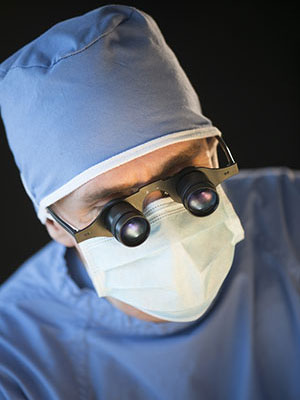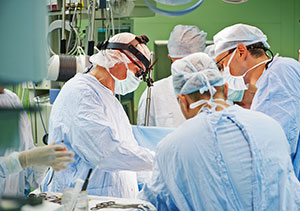
Body Lift Q&A
Recently we brought you the inspiring story of Jess. Jess who is 21 years old started her journey with weight loss at the age of 17 and lost a total of 70kg. She used to weigh just over 150kg and currently weighs in at 80kg. To assist in getting her figure to its best possible shape Jess had a body lift, breast lift and augmentation (all at the same time!). Dr. Dilip Gahankari from Advanced Aesthetics in the Gold Coast was the surgeon who performed all these procedures for Jess. Dr. Gahankari is a Specialist Plastic Surgeon with over 15 years experience who specialises in minimal scar plastic surgery of the face, breasts and body. Dr Gahankari is keenly aware of the importance of short scars in modern plastic surgery and is dedicated to delivering the natural look.
Recently we have been receiving a large number of questions from our readers about thigh lifts and body lifts so we thought whom better than have Dr. Dilip Gahankari answer himself. Make sure you stay tuned for Dr. Dilip Gahankari’s feature coming up soon. And if you have any questions you would like to ask Dr. Gahankari yourself click here.
How many thigh lifts / lower body lifts have you done?
I do them frequently but have not (deliberately) kept a count. The reason is, in my view, weight loss patients require a diverse spectrum of surgery – some may need (or choose) just the apronectomy, some abdominoplasty, some full body lift – which is conventionally ‘lower body lift’ and some upper body lift or what we call as ‘bra-line lift’. Also, added to this spectrum, is the permutation-combination of procedures, some have thigh lifts, some brachiaplasty, some breast reduction, some mastopexy with or without an augmentation. Because of these factors, I deliberately tend to not count individual procedures. I am not sure, a long winded answer is what you were expecting, but I hope, you get my point. Also just for discussion, people tend to assess experience by numbers, which is understandable. However, at least in my opinion, how you do it is more important than how many you do. A good example is breast augmentation. I am sure, there are some cosmetic GPs who do more breast augments than some Plastic Surgeons, but does that mean they are better? I would leave you to ponder on that!
What is the most common complication in thigh lift that you know of? If anything, ever heard of any revision for this?
Traditionally speaking, the commonest complication of thigh lifts is seroma or fluid collection in the thighs. I have not had any in the number of thigh lifts I performed. My most common complication is small breakdown at the uppermost corner of the suture line, just under groin, where, the area is often moist, and the wound gets under tension, when women or men try to squat or spread theirs legs widely. However, in every single case that this happened, no additional procedure was required. Usually, this is a small area which heals by itself in about a week.
What results can you reasonably expect from your lower body lift procedure?
It is a general experience that, the results not only depend on the surgical technique but also on individual patients. When the patient is healthy and with BMI down to approx 25 or less, results are fantastic. When the BMI is higher, it is not always possible to get the same results that one can get, in individuals (men and women) with BMI of 22 or 23. I operated an overseas patient a couple of days ago on Saturday the 5th October. I had not previously met her and I had no previous consultations (in person) with her. She had a gastric band, then first sleeve and then the second sleeve procedure, which helped her weight loss from 172kg down to 94kg. Although, this was a massive weight loss and she was a deserving candidate, she was still BMI of 35, which was more than ideal. However, she was unable to lose more weight and surgery was offered. During surgery, I removed nearly 11.5 kilos in tummy and back tissue and liposuction. On the second day, she looked fantastic, but these patients tend to lose more weight after surgery, and this subsequent weight loss then can make the results of a good body lift surgery look ordinary. It is important, that patients are made aware of these issues and they are asked to have ‘realistic’ expectations.
 Are there before and after photos you can look at?
Are there before and after photos you can look at?
Yes, I always show before and after photos of several of my patients to all prospective patients. When possible, I also arrange for a meeting or telephone conversation with previous patients, so that the prospective patients can ask about the recovery experience – which is usually their most import concern.
What are the risks and complications associated with this procedure?
How much information would you want to know!
Briefly said, I explain about risks in two sections: One – the general risks of any major surgical procedure, which includes risks of anaesthetic, prolonged surgery, wound complications, including the worst possible scenario of losing life (which thankfully, has never happened in my experience).
The second section – includes the risks which are more specific to the procedure. For body lift, these include, wound dehiscence, deep venous thrombosis (DVT), fat necrosis, seromas etc. The risks also include risks of liposuction, such as contour irregularity, fat necrosis, even more rarely injury to deeper organs, nerves and vessels. In my experience, these have been almost negligible.
What kind of additional follow-up will you need after surgery?
The follow up after body lift is very frequent within first 2-3 weeks. In fact, I usually package mild Hyperbaric Oxygen Therapy sessions for quicker resolution of bruising, swelling and for quicker resolution to normalcy. Many of my patients find it to be a feel good therapy. If I am not wrong, we are the first and as far as I know, the only Specialist’s practice in Australia to offer the Hyperbaric Oxygen Therapy for general recovery after the extensive cosmetic and reconstructive procedures.
What will the scars be like?
The scars of lower body lift typically go circumferentially. I place them as low as possible. In the midline they start about 6-7 cm from the anterior end of vulva and go in the normal lowest crease of the abdominal apron that men and women develop after weight loss. Posteriorly, they start from a point – couple of centimetres above the natal cleft (top of the buttock crease) and meet the front scars on the sides.
How long will you need to stay in hospital?
Typical stay is about 3 days. I have had patients who have gone home the next day and some who have stayed for 6 days.
How long is the operation going to take?
For me this usually depends on the patient. If the patient is still quite heavy, this may take up to 8 hrs. Also sometimes, I treat associated problems at the same time. The patient I was mentioning above, who I operated on a few days ago, was also found to have a large hernia, which needed to be fixed at the same time. If the patient is petite and surgery is otherwise uncomplicated, I usually complete it within 6 hrs.
How long will you experience pain after the surgery?
I use pain pumps routinely after surgery and this controls pain very well. I have had an occasional patient who complained of pain that required more than average pain killers or morphine injections or patient controlled analgesia (PCA), but generally, with my technique, pain is well tolerated post-operatively.
How can you manage the pain?
As above.
How long will it take for full recovery?
‘Full Recovery’ is difficult to define. I tell my patients that they are usually able to drive in about 2 weeks – which often means that they can go back to their offices if they are in a sedentary occupation. I however usually suggest a three week break for doing this comfortably. Heavy lifting, core body exercises, and intense gym activities are not advised for 8 weeks at least. Swimming is usually ok in about 3 weeks, but this depends on their wounds status. They need to wear the abdominal binder for 6-8 weeks.
 How soon after the operation can you expect to see the final results?
How soon after the operation can you expect to see the final results?
Well, the results are obvious probably the next day. I always tell patients their body would lose most of the swelling and bruising in about 2-3 weeks, but it does take up to 6 months for scars to mature, contours to smoothen out and the feeling of stretch to resolve.
How long will you need to rest before you can resume normal activities?
Again “normal activities’ is difficult to define for every patient, and I addressed this in one of the responses above. However, I wish to add that I insist on patients getting out of bed the next day and walking at least a few metres. On the second day, 4-6 times and from third day, a visit to the coffee shop in the hospital is expected!
Are you likely to need help at home for normal activities immediately after surgery? For how long?
Again this depends on the individual. Most patients need some help for the first 2-3 weeks, and the need progressively reduces over this period. If they have small kids, who need to be picked up, they are instructed not to lift them up, but told to sit down and have kids come to them and them hug them before lifting them up.
How likely is it that you will get an infection after the surgery?
I have been pretty lucky so far, and have had very few infection related issues. Once I had three overseas patients together (who stayed together during recovery) for body lifts, who all had wound infections from the same bacteria and needed some minor wound toilet (cleaning of the wound). But this, as I assumed, was probably related to cross infection issues rather than general problem.
What type of anaesthesia will be used?
General anaesthetic.
What can you do to minimise the risk of short-term and long-term complications?
The risk of wound complications increase with increased BMI, therefore, getting BMI down to 25 or even lower prior to surgery, helps better results, less risk of wound complications, better scars and much better longer term results in terms of contour. Other short term complications are avoided by keeping a healthy lifestyle, complete abstinence from nicotine in any form, good and early post-operative mobility, and breathing or chest exercises.
Longer term complications can be related to scarring, scar stretching etc, which are prevented to some extent by good surgical technique. Maintenance of diet and vigilant weight control is crucial for maintaining good results obtained with surgery.
Are there other procedures you may need that are related to this?
As I mentioned in my opening paragraph, many combinations are possible, depending on the extent of skin laxity, weight loss, patients’ lifestyle, desires, expectations, extent of surgery planned and their preference. The procedures include, thigh reduction, brachioplasty, breast reduction, lift or implants with lift, face lift, neck lift, upper eyelids reduction or liposuction. Typically, men also inquire and some opt for correction of gynaecomastia during their first surgery.
Is there any alternative to this surgery?
Usually not, as the excess hanging skin needs to be surgically removed.
What is included in the total costs for the procedure?
In my practice, we include some complimentary Hyperbaric Oxygen Therapy sessions, post-operative short and long term follow ups, dressings etc.
Does Medicare pay any of these costs?
Yes, Medicare has some rebates for the abdominoplasty part and for excision of loose excess skin folds in back and elsewhere. This rebate is however quite small.
Will your private health insurance cover some of the costs?
The private funds, may cover the hospital costs, inpatient fees and also provide some additional rebate on Surgeons’ and Anaesthetic and Assistant’s fees.
I hope these responses have been helpful to you. Please do not hesitate to contact me if any further information is needed.
I also take this opportunity to thank you for promoting this cause via Jess’s story as well as myself. This is most appreciated.
Thank you. Regards.
Further Reading Related to Thigh Lift Surgery
- Medial Thighplasty or Inner Thigh Lift | My Klinik
- Thigh Lift Surgery Sydney – Thigh Reduction Surgery by Dr Kernohan Plastic Surgeon
- Body Surgery | Mr Mark Gittos | Plastic Surgeon UK
- Excess Skin Removal Sydney – Soliman Plastic Surgery – Dr Bish Soliman
- Guy Watts | Perth Plastic Surgeon | Thigh Lift
- Thigh Lift FAQs – Questions about Thigh Reduction Surgery


